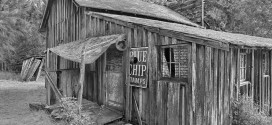Prices of “normal” homes-those that aren’t foreclosures or short sales-are stabilizing and the numbers of future foreclosures are falling. That “sliver of good news for consumer spending” was included in CoreLogic’s July report on housing and market trends.
In May 2011, the firm’s Home Price Index excluding distressed sales only dropped 0.4 percent from a year ago, compared to a decline of 7.4 percent for the all transactions measured by the HPI. Even while including distressed sales, the HPI increased between March and April-the ?rst time in more than six months- and was up again between April and May.
“These increases represent the resumption of seasonality in home prices and are a positive sign for the market. When disaggregating median prices by type
of sale for the ? rst complete month of the spring home buying season, it is clear that despite the whipsaw impact of the federal homebuyer tax credit, state homebuyer tax credits and increases in FHA premiums, non-distressed median existing and new prices are back to 2009 levels,” the report said.
New foreclosure auction ?lings have been down signi?cantly since October 2010 and the current residential shadow inventory, which is the estimated number of pending supply of distressed properties, declined to 1.7 million units in April 2011, down from 1.9 million units a year ago and down nearly 20% from its peak, CoreLogic reported.
Although the distressed sales share remains high, the geographical sources of distress are shifting and becoming more dispersed. As of December 2008, four of the top ?ve largest distressed sales markets were all located in California, and the top ?ve markets averaged a distressed sale share of 68 percent. As of April 2011, only two of the top ?ve markets are in California and, more importantly, the top ?ve average distressed share was 56 percent — a 12 percentage point decline relative to top markets in late 2008.
 RealEstateEconomyWatch.com Insight and Intelligence on Residential Real Estate
RealEstateEconomyWatch.com Insight and Intelligence on Residential Real Estate
